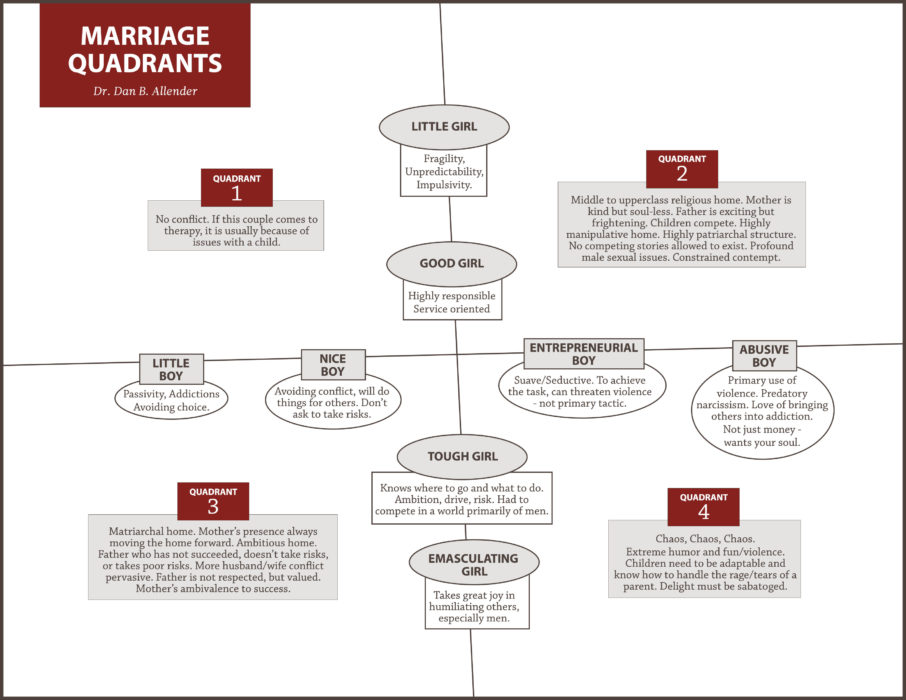The Marriage Quadrants, Part Three

This week on the Allender Center Podcast, Dr. Dan Allender continues our series about the Marriage Quadrants, a theoretical framework of marriage that informs how he engages and works with couples. For a visual representation of the categories Dan is discussing, we’ve included a PDF layout of the Marriage Quadrants at the bottom of this post.
“Everyone in this marriage has to be part of that kind of striving.”
In this episode Dan moves on to Quadrant Two, which describes patriarchal marriages that are very common in suburban evangelical circles. These families place a high emphasis on performance, success, and excelling in the “right” schools, churches, sports, jobs, and hobbies. The husband in this marriage sees work as his domain, with the calling to provide for his family’s success, while the wife often exerts her influence by making sure the family keeps up appearances. Children of these marriages know from the beginning that their success matters a great deal.
Beneath the shiny and successful surface of a Quadrant Two marriage is a storm of loneliness and contempt, which often leads to intense triangulation, with one or both partners turning to a particular child to fill the holes that exist in the marriage. These dynamics foster fragmentation, contention, and a high level of hidden drama.
There is so often an intersection between power and contempt on one side, and compliance and withholding on the other.
“Wherever one is contemptuous in some form, they have power—the power to make the other pay. Contempt always demeans, belittles, brings deep harm,” says Dan. “The response, often, is a form of acquiescence without the body being present, without desire being present.”
Dan also reflects on how Quadrant Two dynamics are often a reflection of painful family of origin experiences, a way of trauma playing itself out in the facade of normalcy and the pursuit of success. “That simply has to collapse if ever a person is going to rebuild on the basis of integrity.”

